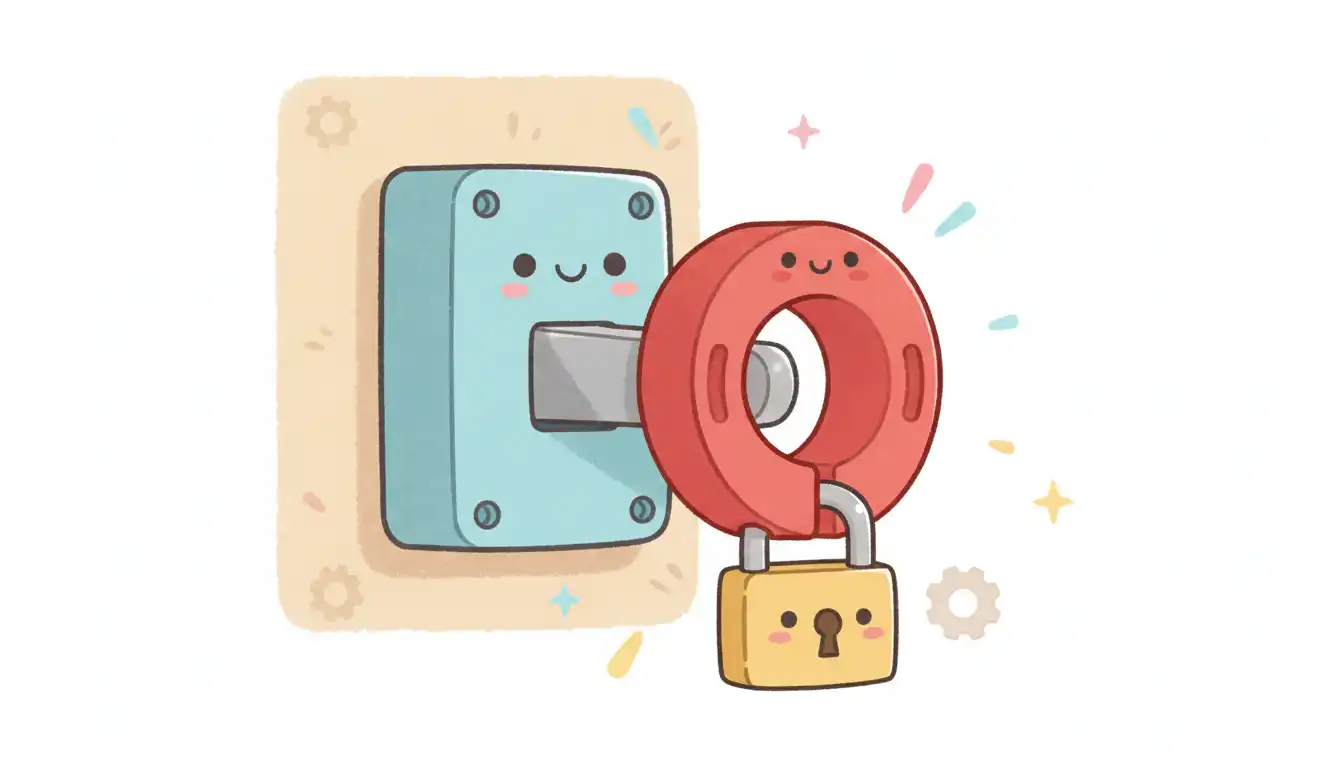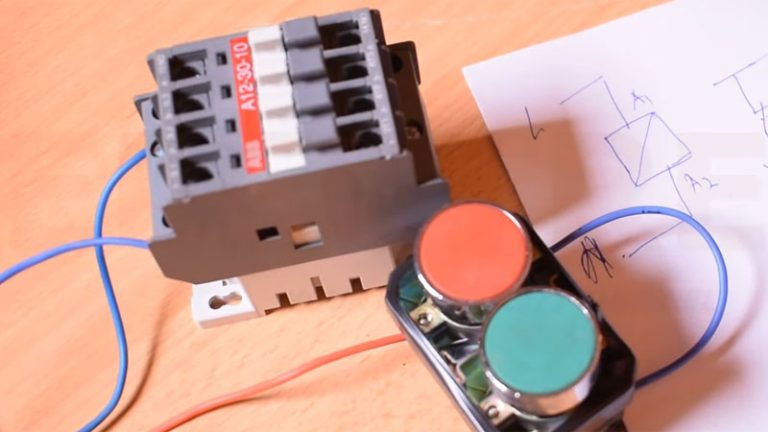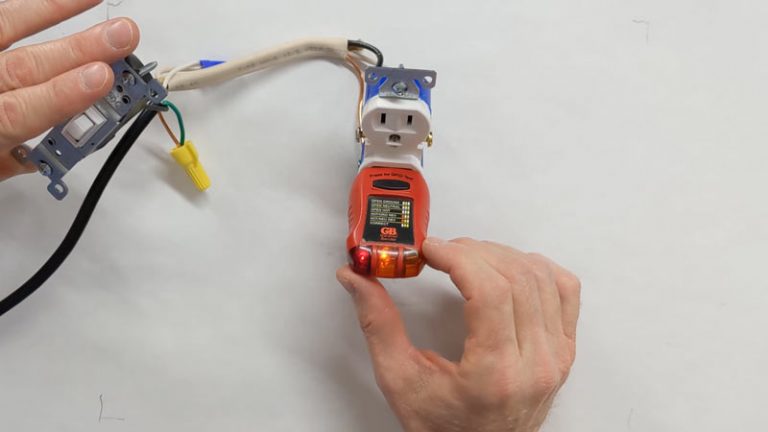Limit Switch Lockout Explained: Why Your Furnace is Off & How to Fix It
The house is cold, the thermostat is calling for heat, but your furnace is completely silent. When you check the unit, a blinking light signals a “limit switch lockout.” This scenario is frustrating and concerning, but it’s your furnace’s way of protecting itself, and you, from a more serious problem.
A limit switch lockout is a safety mode. It means a critical safety sensor—the high-limit switch—has tripped multiple times in a row, forcing the system to shut down until it’s manually reset. Understanding why this happens is the first step toward a safe and effective solution.
You'll Learn About
What Is a Furnace Limit Switch?
Think of the high-limit switch as your furnace’s emergency thermometer. Its job is to monitor the temperature inside the heat exchanger, the component that transfers heat to the air distributed through your home. If this area gets dangerously hot, the limit switch trips and shuts off the gas burners to prevent overheating.
A single trip might happen occasionally, but when the switch trips repeatedly, the furnace’s control board assumes there’s a persistent, unresolved issue. To prevent damage or a potential fire hazard, it enters a “hard lockout” state, refusing to restart until the underlying problem is fixed and the system is reset.
The Real Reasons Your Furnace Is in a Limit Switch Lockout
A limit switch lockout is always a symptom of a deeper issue, almost always related to poor airflow. When air can’t move freely through the furnace, the heat produced by the burners has nowhere to go. This causes temperatures inside the unit to rise rapidly, tripping the limit switch.
The Obvious Culprit: A Clogged Air Filter
This is the number one cause of furnace lockouts. A dirty, clogged air filter severely restricts the flow of return air into the furnace. The blower motor struggles to pull enough air through, leading directly to an overheated heat exchanger. Regularly checking and replacing your filter is the easiest and most important piece of furnace maintenance.
Blocked Airflow Beyond the Filter
Even with a clean filter, airflow can be blocked elsewhere. Ensure that supply vents (where hot air comes out) and return air grilles are not blocked by furniture, rugs, or curtains. Closed dampers in your ductwork can also choke off air to certain parts of the house, causing a pressure imbalance and overheating.
The Hidden Menace: A Dirty Evaporator Coil
If you have central air conditioning, the indoor evaporator coil sits on top of or next to your furnace. All the heated air must pass through this coil. Over time, if unfiltered air gets by, the coil can become caked with dust and grime, creating a massive obstruction that your blower motor can’t overcome.
A Weak or Failing Blower Motor
The blower motor is the heart of your furnace’s air-delivery system. If the motor itself is failing or its capacitor is weak, it won’t spin at the required speed to move enough air. This reduced airflow is a direct path to an overheated furnace and a tripped limit switch. You might notice weaker airflow from vents or unusual noises as signs of a struggling motor.
Maintaining your entire home’s systems is crucial. Just as routine care prevents major HVAC issues, simple tasks like addressing a slow drain in your kitchen can prevent bigger plumbing headaches down the road.
The Professional Problem: An Oversized Furnace
Bigger isn’t always better. A furnace that is too powerful for your home’s square footage and ductwork will heat the space too quickly. This phenomenon, known as “short-cycling,” causes frequent, abrupt shutdowns and can lead to overheating because the system doesn’t run long enough to circulate air properly.
The Critical Safety Issue: A Faulty Limit Switch
While less common, the limit switch itself can fail. It might become too sensitive and trip at normal operating temperatures, or it could be stuck open, causing the lockout. This component is a vital safety control, and a faulty one demands immediate attention.
Your Step-by-Step Guide to Fixing a Limit Switch Lockout
Before attempting any troubleshooting, you must prioritize safety. Working on a furnace involves high voltage and combustible fuel. If you are ever unsure, stop and call a professional.
Step 1: Safety First – Cut the Power
Always turn off all electrical power to the furnace. Locate the service switch, which often looks like a light switch on or near the furnace, and turn it off. For good measure, also turn off the corresponding breaker in your main electrical panel.
Step 2: How to Reset Your Furnace Lockout
Most modern furnaces can be reset by simply cycling the power. After turning the power off at the switch and breaker, wait at least one full minute. Then, turn the power back on. This often clears the lockout from the control board’s memory and allows the furnace to attempt a new startup sequence.
Step 3: The Troubleshooting Checklist
Now, investigate the potential causes before the furnace locks out again.
- Inspect the Air Filter: Remove the filter. If it is visibly dirty, replace it with a new one of the correct size.
- Check All Vents and Returns: Walk through your home and ensure all registers are open and unobstructed.
- Listen to the Blower: When the furnace attempts to start, listen for unusual sounds like grinding or screeching from the blower motor.

Step 4: Testing the Limit Switch (For Advanced DIYers)
If you have a multimeter and are comfortable with electrical testing, you can check the limit switch for continuity. With the power off, disconnect the two wires from the switch. Set your multimeter to the continuity setting (which often has a sound icon) and touch one probe to each terminal on the switch. A healthy switch should produce a beep, indicating a closed circuit.
Troubleshooting Summary Table
| Problem | DIY Difficulty | Recommended Solution |
|---|---|---|
| Dirty Air Filter | Easy | Replace the air filter immediately. |
| Blocked Vents/Returns | Easy | Remove obstructions and open all registers. |
| Dirty Evaporator Coil | Moderate | Visual inspection is possible; professional cleaning is recommended. |
| Failing Blower Motor | Hard | Requires professional diagnosis and repair. Call an HVAC technician. |
| Faulty Limit Switch | Moderate | Can be tested and replaced by a skilled DIYer; professional help is advised. |
| Cracked Heat Exchanger | Critical | Turn off the furnace and call an HVAC technician immediately. |
Beyond the Lockout: Recognizing Deeper Issues
A limit switch lockout is a clear warning sign that something is wrong. While often caused by restricted airflow, it can also signal a more dangerous condition, like a cracked heat exchanger. A crack can allow combustion gases, including deadly carbon monoxide, to enter your home’s airstream.
Other furnace problems can also cause a shutdown. For instance, repeated startup failures may be due to an ignition proving failure, which involves the flame sensor or igniter, not the limit switch. Understanding the difference helps in diagnosing the root cause.
When to Put Down the Tools and Call a Professional
You should call a qualified HVAC technician immediately if you are not comfortable performing the troubleshooting steps, if the furnace continues to lock out after you’ve replaced the filter and cleared vents, or if you suspect a serious issue. Never ignore symptoms like a burning smell, loud mechanical noises, or a flickering, yellow burner flame.
Safety components are essential investments. Their importance is similar to understanding why quality home components have their price; they provide security and peace of mind that are well worth the cost.
Frequently Asked Questions
What is a limit switch lockout?
A limit switch lockout is a safety feature that stops a system’s operation to prevent damage from issues like overheating. A limit switch monitors the temperature or position of components and will activate a lockout if conditions go beyond safe operational limits. The equipment will not resume operation until the underlying problem is fixed and the system is reset.
What causes a limit switch lockout to occur?
The most frequent cause of a limit switch lockout, especially in furnaces, is restricted airflow from a dirty or clogged filter, which leads to overheating. Other potential causes can include a faulty blower motor, improper gas pressure, or a defective switch. In industrial machinery, it can be triggered by a misaligned component, like a conveyor belt, to prevent further damage.
How can you resolve a limit switch lockout?
Troubleshooting a lockout often begins with checking for simple issues, such as replacing a dirty air filter. You can also try to reset the system by turning off the power for a short period and then turning it back on. If the lockout condition continues, it signals a more significant problem that a professional technician should diagnose.
Is a limit switch lockout a dangerous situation?
The lockout itself is a safety mechanism designed to prevent a dangerous situation. It signifies that an unsafe condition has been detected, which could otherwise result in equipment damage or a fire. It is important to address the root cause of the lockout to ensure safe operation.
What is the difference between a soft and a hard lockout?
A soft lockout is a temporary shutdown where the system may attempt to restart on its own after a fault is detected. A hard lockout occurs after multiple unsuccessful restart attempts (soft lockouts) and typically requires a manual reset to restore operation.
Keeping Your Furnace Healthy and Preventing Lockouts
The best way to deal with a limit switch lockout is to prevent it from ever happening. Regular professional maintenance is key to ensuring all components are clean and functioning correctly. Between service calls, your primary job is simple: check your air filter every month and change it when it’s dirty.
By addressing the root cause of airflow problems, you not only fix the immediate issue of a lockout but also improve your furnace’s efficiency, extend its lifespan, and ensure your home remains safe and warm.


